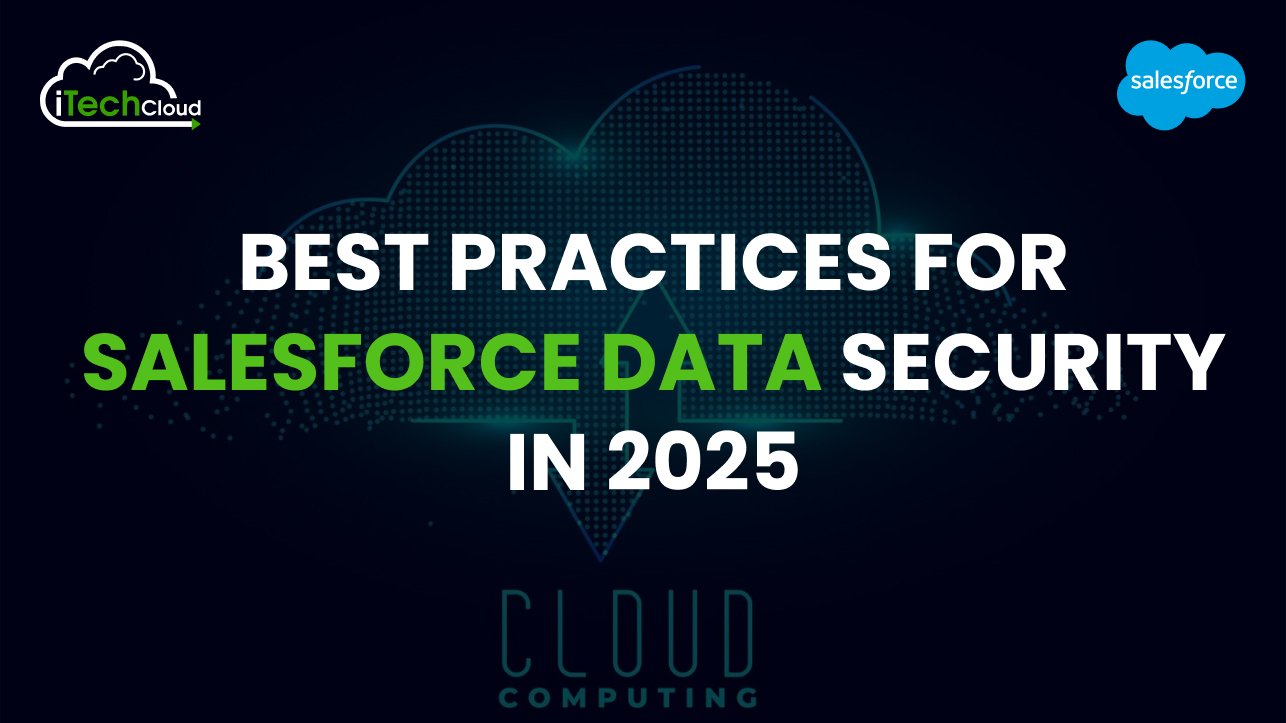Salesforce is a leading cloud-based CRM platform that enables businesses to manage customer data, streamline operations, and improve collaboration. However, with the increasing reliance on cloud services, data security has become a top priority for organizations. In 2025, new cybersecurity threats and evolving compliance requirements necessitate a robust Salesforce security strategy. This blog explores the best practices for Salesforce data security in 2025 to ensure data integrity, confidentiality, and compliance.
1. Implement Strong Access Controls
Role-Based Access Control (RBAC)
Salesforce provides robust access control mechanisms that allow administrators to define user roles and permissions. Implement Role-Based Access Control (RBAC) to ensure that users only have access to the data and functionalities required for their role.
- Use Profiles and Permission Sets to control access at a granular level.
- Implement Field-Level Security to restrict access to sensitive data.
- Configure Org-Wide Defaults (OWD) to determine baseline data visibility.
- Utilize Sharing Rules and Manual Sharing to grant additional access as needed.
Multi-Factor Authentication (MFA)
MFA is a critical security measure that requires users to verify their identity through multiple authentication factors. Salesforce enforces MFA for all users accessing its platform.
- Enable MFA using Salesforce Authenticator, security keys, or third-party authentication apps.
- Require MFA for all administrative and privileged users.
- Monitor and enforce MFA adoption through Login History Reports.
2. Encrypt Sensitive Data
Platform Encryption
Salesforce offers Shield Platform Encryption, which helps protect sensitive data at rest.
- Encrypt fields, files, and attachments containing personally identifiable information (PII) and financial data.
- Implement Bring Your Own Key (BYOK) to have greater control over encryption keys.
- Regularly rotate encryption keys to enhance security.
Transport Layer Security (TLS)
Ensure TLS 1.2 or higher is enforced to protect data in transit between users and Salesforce servers.
3. Monitor and Audit User Activity
Event Monitoring
Salesforce’s Event Monitoring provides visibility into user activity and API usage. It helps detect potential security threats and policy violations.
- Track login attempts, data exports, and report runs.
- Set up alerts for unusual user behavior such as mass downloads or suspicious API calls.
- Use Einstein Data Detect to identify anomalous activities and potential security breaches.
Audit Trails
Enable Field History Tracking and Setup Audit Trail to monitor changes in configuration and data modifications.
- Retain audit logs for compliance and forensic investigations.
- Regularly review logs for unexpected changes to permissions and access levels.
4. Data Loss Prevention (DLP)
Restrict Data Export and Copying
Salesforce allows administrators to control data exports to prevent unauthorized data extraction.
- Restrict report and dashboard exports based on user roles.
- Use Transaction Security Policies to block suspicious bulk data exports.
- Disable Clipboard Copy for sensitive fields using custom UI policies.
Mask Sensitive Data
Utilize Data Masking to obfuscate sensitive information in sandboxes and non-production environments.
- Apply Pattern-Based Masking for structured data such as credit card numbers.
- Use Randomized Masking to generate synthetic test data.
5. Secure API and Integration Endpoints
API Security Best Practices
Salesforce APIs allow integrations with third-party applications. Ensure secure API usage by:
- Enforcing OAuth 2.0 authentication for secure API access.
- Restricting API access using IP whitelisting and connected app policies.
- Using Named Credentials to avoid storing hardcoded credentials in Apex code.
Monitor API Usage
Leverage API Event Monitoring to track API call volumes and detect anomalies.
- Set rate limits to prevent API abuse.
- Monitor Integration User Activity for unauthorized access.
6. Regular Security Reviews and Compliance Audits
Conduct Periodic Security Assessments
Regular security audits help identify vulnerabilities in your Salesforce instance.
- Perform Penetration Testing to detect security flaws.
- Conduct Configuration Reviews to ensure best practices are followed.
- Use Health Check to evaluate security settings against Salesforce recommendations.
Stay Compliant with Industry Standards
Salesforce supports compliance frameworks like GDPR, HIPAA, CCPA, and SOC 2.
- Use Salesforce Shield for compliance-driven logging and encryption.
- Implement Consent Management to handle customer data responsibly.
- Keep updated with regulatory changes to maintain compliance.
7. Employee Training and Awareness
Security Awareness Programs
Educating employees about security risks reduces the likelihood of breaches.
- Conduct regular security training sessions for users and administrators.
- Provide phishing awareness training to prevent credential theft.
- Encourage secure password management using password managers.
Enforce Security Policies
Define clear data security policies and enforce them using Salesforce’s Transaction Security features.
- Restrict access to Salesforce from untrusted networks.
- Require session timeouts for inactive users.
- Enable Geo-Location Tracking for login anomalies.
8. Incident Response and Disaster Recovery
Establish a Response Plan
Having a well-defined Incident Response Plan (IRP) helps mitigate security breaches quickly.
- Set up automated alerts for potential security incidents.
- Designate a security response team to investigate breaches.
- Develop communication protocols for notifying stakeholders during a breach.
Backup and Restore Strategy
Ensure data resiliency by implementing a robust backup and restore plan.
- Use Salesforce Backup & Restore or third-party backup solutions.
- Schedule daily automatic backups and store copies in a secure location.
- Regularly test data restoration to ensure backup integrity.
Conclusion
In 2025, Salesforce security is more critical than ever due to evolving cyber threats and regulatory requirements. By implementing strong access controls, encrypting sensitive data, monitoring user activity, and securing integrations, organizations can effectively protect their Salesforce environments. Regular security assessments, compliance adherence, employee training, and a solid incident response plan further enhance data security. Following these best practices will ensure that your Salesforce instance remains secure, compliant, and resilient against potential security risks.


